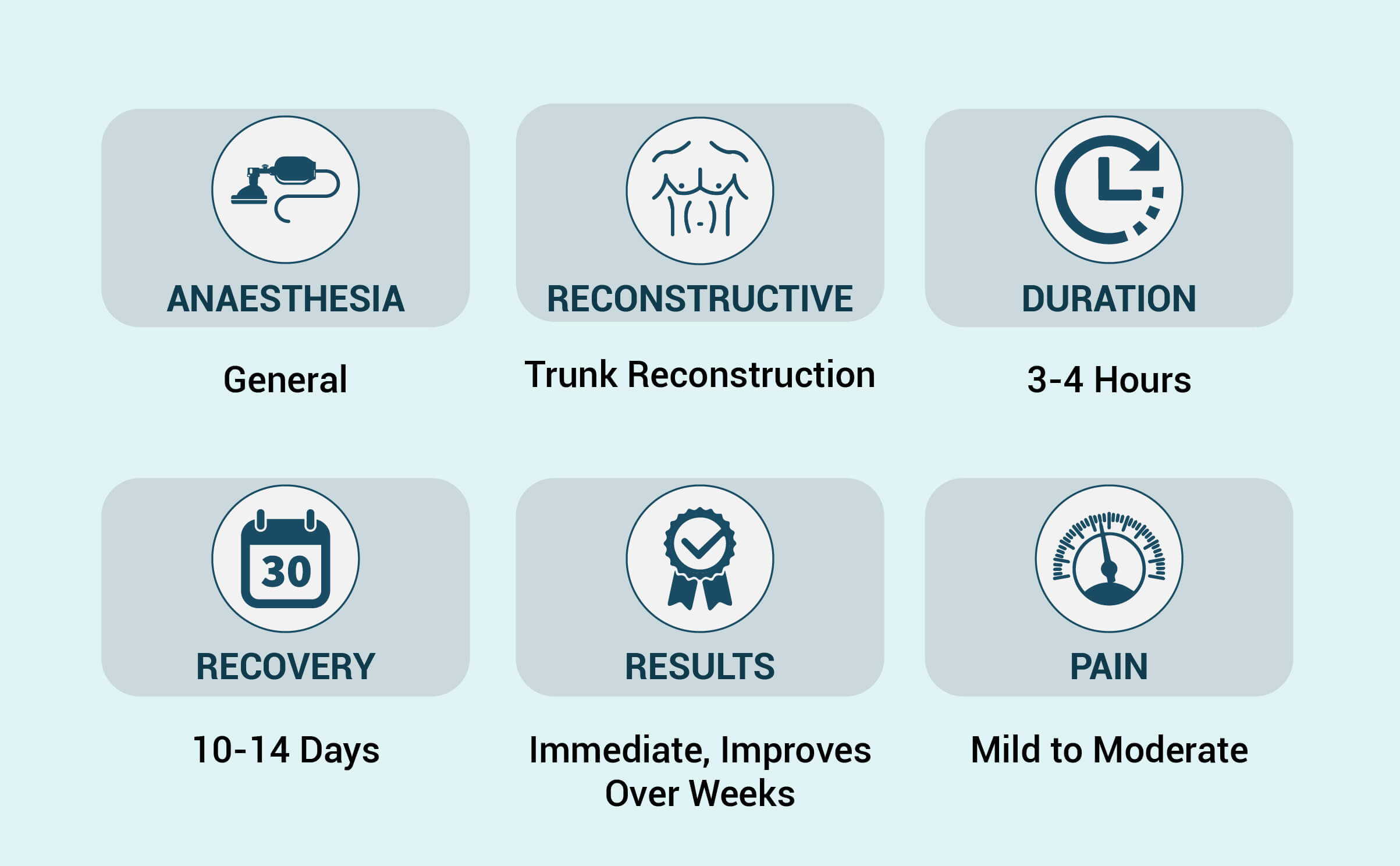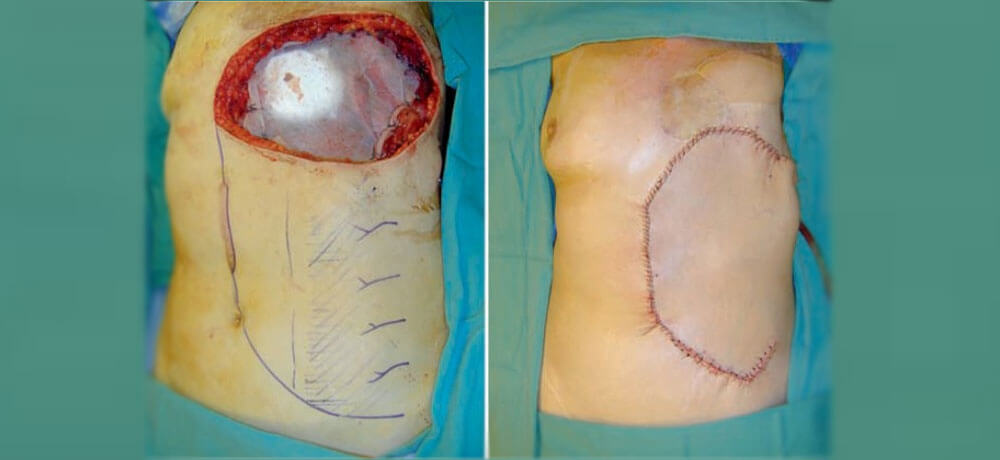Trunk Reconstruction Procedure
The following types are reconstruction are offered by the team at The Plastic Surgeons:
Chest wall reconstruction
Sternal reconstruction
Abdominal wall reconstruction
Pressure sore surgery

Chest wall reconstruction

Most malignant as well as large benign tumors of the chest wall typically require thoracic surgery to cut away the abnormal growth. Chest wall resection involves the partial or full surgical removal of soft tissue, cartilage, sternum and/or ribs.
Chest wall reconstruction, using manmade prosthetic materials such as artificial bone or titanium rib plating, may be employed to rebuild the skeletal structure of your chest wall after chest wall resection. Some chest wall disorders due to congenital conditions or trauma also benefit or require chest wall repair and reconstruction.
Sternal Reconstruction
Sternal reconstruction may be needed after a surgery that utilized the sternum (Chest Bone) as access to the chest cavity. This is a common approach for coronary bypass or valvular surgery. Sometimes after surgery a complication such as an infection causes a problem where your sternum cannot be closed entirely.
Dr. Jacob has a vast experience in treating sternal wounds including those that are acutely, or chronically infected. First, special attention is paid to clearing the infection with meticulous wound care. Then a number of techniques may be employed to achieve final closure, including muscle, or even omental flaps.
If you have an infected sternum or a chronic wound of your sternum, you may be a candidate for sternal reconstruction. You must be healthy enough to undergo general anesthesiaanaesthesia in order to be a candidate.
Sternal reconstruction can provide durable long lasting coverage to a chronic wound of your chest bone.
Abdominal Wall Reconstruction
Abdominal wall reconstruction is a complex surgery typically used to correct abdominal weaknesses caused by recurring hernias, or open wounds that are not easily resolved by other specialties.
Dr. Vinay Jacob is called for his expertise in such difficult situation to perform abdominal wall reconstruction to dynamically restructure the abdomen at the time of closure.
Abdominal wall reconstruction requires moving abdominal tissues to redistribute the abdominal muscles. This creates a dynamic repair that works to reinforce the midline closure.
Patients report feeling as though they are wearing a girdle afterward — everything is tucked in — as the musculature is restored as close to the midline as possible. This helps to neutralize the reasons for hernia breakdown , and makes a successful solution more likely.
Pressure Sore Surgery
Pressure ulcers, also known as pressure sores, pressure injuries, bedsores, and decubitus ulcers, are localized damage to the and/or underlying tissue that usually occur over a bony prominence as a result of pressure, or pressure in combination with shear and/or friction.
The most common sites are the overlying the sacrum, coccyx, heels or the hips, but other sites such as the elbows, knees, ankles, back of shoulders, or the back of the cranium can be affected.
Management includes:
Debridement:These are specialized surgical procedures and need to be meticulously executed in a specialized way to remove all dead tissues and debris from the wound to convert a contaminated wound in to a clean one.
Dressings:Specially designed dressings can be used to protect pressure ulcers and speed up the healing process.
Diet and nutrition:Diet is paramount in these chronic situations, to achieve a positive state of nutritional status to be in the repair phase.
Surgery:This involves combining various principles and art of Plastic surgery to design flaps to cover the defects.
Dr. Vinay Jacob is a leading name in the treatment and management of these difficult reconstructive challenges and conducts teaching sessions to the immediate and medical care givers to help them understand and deal with this difficult condition.
 WhatsApp
WhatsApp